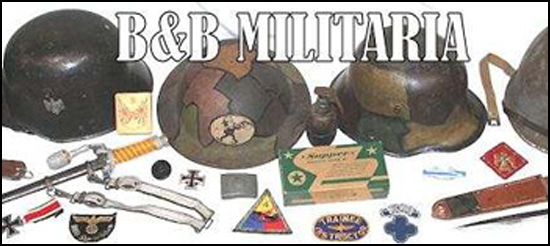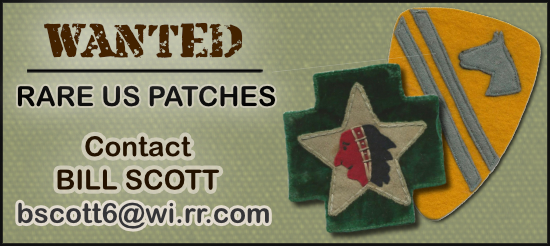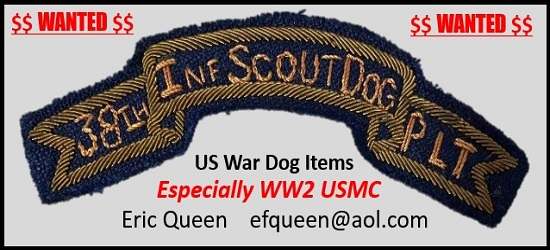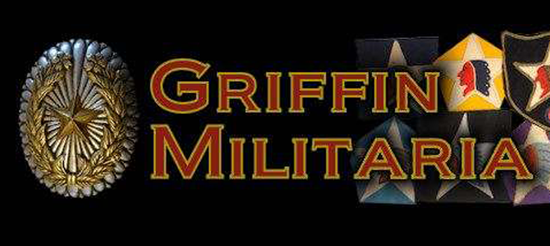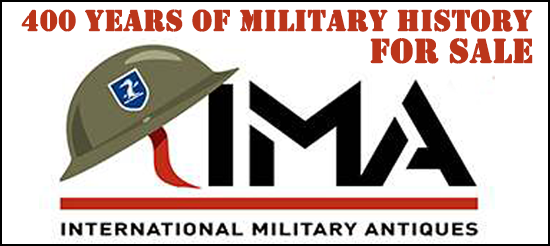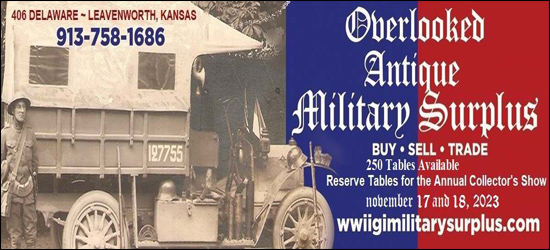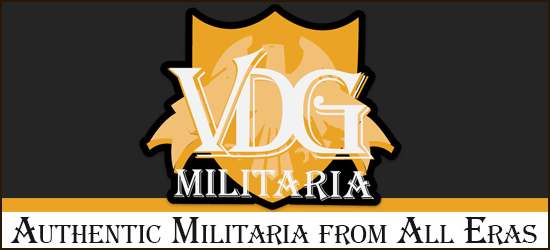-
Donate
Type donation amount in box below.
IMPORTANT! If you donate via PayPal using an e-mail address different than the one you are currently using on USMF and would like a 2024 Donor Icon added to your account, you MUST CONTACT vintageproductions or stratasfan and let them know what email address was used for the donation.
Thank you for supporting USMF.
Donate Sidebar by DevFuse -
Recent Posts
-
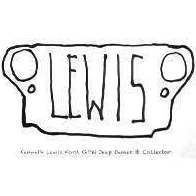
By General Apathy · Posted
. Just had an email from an old school chum that moved to Germany after we left school, and worked on their design team. Sadly the photographs came in a bloc and wouldn't separate or enlarge. Norman D. Landing, Forum Normandy Correspondent, April 10 2O25. ... -
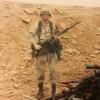
By BryanJ · Posted
Bainbridge, Georgia is about 30 miles North of Tallahassee where I live. I wish I’d known there was a surplus store that close. But, in the 90’s I was a young Dad, and military surplus wasn’t even a consideration at that time. In the intervening years, I’ve accumulated a collection, sold a collection, and just made my first new militaria purchase, a WWII 2nd Infantry Division patch which should arrive from EBay in the next couple of days. After I hit the “Bid” button on EBay I had to ask myself, “…why did I just do that?” If anyone knows the answer to that question, I’d like to know. 🤔 -
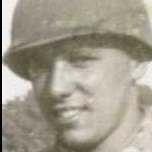
By tdogchristy90 · Posted
John R. Malcolm John Richard Malcolm was born on October 14, 1924 in Atlanta, Georgia to parents Redford and Lizzie Malcolm. Interestingly enough his Great Grandfather, John Malcolm was a Civil War veteran with the 44th Infantry Regiment, Georgia, who was captured as a prisoner of War in May, 1864 during the Battle of Spotsylvania Court House. He was later exchanged in March, 1865. Going to school in Buckhead, Georgia, John Malcolm enjoyed basketball and took electric welding classes at the local trade school. He was a stock clerk in Atlanta before being inducted into the United States Marine Corps on February 26, 1943 at SDHS, Atlanta, Georgia. In March, 1943, John was transferred to a Replacement Battalion at the Replacement Depot at Marine Corps Base, San Diego, CA where he underwent initial instruction before transferring to Parachute Training School on May 26, 1943. Becoming a qualified parachutist in July, he joined Company K, 3rd Parachute Battalion, 1st Marine Parachute Regiment on October 11, 1943. Following the surprising and successful use of paratroopers by the German Army in Belgium in 1940, the United States Marine Corps set about a course of action to create its own paratroopers. Eventually, three parachute battalions made up the 1st Marine Parachute Regiment. While four parachute operations were planned, they never took place. Instead, the Paramarines were used to strengthen and complement existing Marine infantry units preparing for amphibious warfare in the pacific. Leaving California in September 1943, John Malcolm reached New Caledonia and later Guadalcanal, and then Vella LaVella in October. He then sailed from Vella LaVella aboard LCI 336 on December 3, 1943, disembarking at Bougainville Island on December 4, 1943. Reconnaissance by the Marine Corps found that the Japanese had failed to occupy high ground near the Torokina River and the Marine’s defensive perimeter. Commanders then ordered elements of 1st Parachute Regiment, attached to 3rd Marine Division, to occupy and defend Hill 1000. Once secure, parachutists patrolled the perimeter of the hill. While patrolling, they encountered increasing enemy activity that led the Marines to shore up their defenses around the hill. On December 9, 1943, patrols encountered strong Japanese machine gun and rifle fire. Along with others that were wounded in action from K Company, John Malcolm suffered a compression head injury caused by an exploding enemy hand grenade while out on patrol. Following combat on Bougainville, John Malcolm arrived back in San Diego aboard the USAT David C. Shanks on February 14, 1944. He then sailed aboard USAT Etolin in October, arriving at Hilo, Hawaii on October 19, 1944. Following a few months in Hawaii, John Malcolm, along with others from the 5th Marine Division, sailed aboard USS Lubbock on January 8, 1945, disembarking at Iwo Jima Island on February 19, 1945. The Paramarines were an elite, specialty group within the Marine Corps that had always been divisive. Some saw them as an asset while others saw them as a burden. On December 25, 1943, Chief of Naval Operations Admiral King, agreed to a plan to disband the Paramarines and absorb them into new Marine Infantry units. They sited cost savings, uniformity of equipment and training and the elimination of select elite units as the reasoning for this decision. On January 1, 1944, as one of his first acts as the newest Commandant of the Marine Corps, Alexander Vandegrift ordered the closing of the Parachute Training School at Camp Gillespie. The 1st Parachute Regiment furled its colors on February 29, 1944. John Richard Malcolm was absorbed into Company H, 3rd Battalion, 28th Marine Regiment, 5th Marine Division on March 1, 1944. The 5th Marine Division saw its first taste of combat when it landed at green beach on Iwo Jima Island during the morning hours of February 19, 1945. During the landing of Malcolm’s 28th Marines, shelling was furious and progress was slowed in the soft, loose volcanic ash. The 28th Marines initial objective was to surround and isolate Mount Suribachi from the rest of the island. Malcolm and the rest of 3rd Battalion met heavy resistance in its advance towards the base of the mountain. By February 22, despite rough terrain that meant the use of flame throwers and demolitions in the days toughest fighting, Malcolm and the rest of 3rd Battalion moved forward and reached Suribachi. They then spent the next few days around the mountain clearing out die-hard Japanese. By March 1, 1945, the 28th Marines were sent north following their patrol responsibilities around Mount Suribachi. That morning they advanced on Hill 362A. As they reached the crest of the hill they were met with heavy machine gun and mortar fire from the next ridge to the North, known as Nishi Ridge. Moving from their dug in positions from the night before, 28th Battalions advanced around the sides of Hill 262A to attack Nishi Ridge. Malcolm’s 3rd Battalion worked its way up the west coast, moving northeast. The next day they moved north, continuing along the shoreline. On March 3, the 5th Division continued its attack with the 28th Marines continuing its push North along Nishi Ridge. Malcolm and the rest of Company H, 3rd Battalion, 28th Marines were attached to 1st Battalion, 28th Marines at daybreak. They were tasked with attacking and clearing out enemy positions that faced their regiments right flank and to help straighten out the division’s lines. As they drove through the maze of enemy emplacements hidden within the rugged terrain, casualties piled up fast. Relieving another unit, Company H, 3rd Battalion sustained such high casualties within an hour and a half that the company they were relieving had to fall back into line. Later in the day Company H was then asked to fill a gap that had developed within the 28th lines but was so depleted they were only able to do so by covering it with fire. It was during this effort on March 3, 1945 by Company H, 3rd Battalion, 28th Marines, that John R. Malcolm was killed in action when he sustained a gunshot wound to the head. He was 20 years old at the time. Initially buried in the 5th Marine Division Cemetery in plot 5, row 5, grave 1090, he was reinterred in the National Memorial Cemetery of the Pacific, Hawaii. -
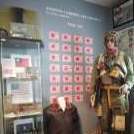
By jerry_k · Posted
@walika I read this thread again. Are you sure that VBF-83 patch is - "leatherette" It looks more like a blue canvas from an engine cover than leather? -
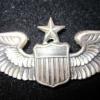
By mtnman · Posted
Absolutely beautiful LGB classics and gilted early wings no less! -

By General Apathy · Posted
. Hi Sol, Thank you, merci bien. Norman D. Landing, Forum Normandy Correspondent, April 10 2O25. ... -

By General Apathy · Posted
. Hi Johan, they certainly were I stayed with them many times and went with Tom on militaria hunting runs all over the country he certainly got a lead on many hidden piles of stuff or closed down stores. One place we went to in the mid 90's was the basement of a town clothing store, during WWII the basement had been full of uniforms and accoutrements of all descriptions, at war's end the store couldn't sell any more of it so they simply closed the basement off and abandoned everything for fifty years down there., if I recall it was Red Bank NJ. Amazingly everything was in like mint condition, service coats, trousers, underwear, service caps, boxed officers shoes, patches of every conceivable division, unit squadron etc, etc, etc. When we did Chicago this is where I found an unopened wooden crate of twelve of the leather bound flak helmets, never really found out any real information about them other than they were WWII dated on the crate and packing details inside. The artist on Tom's catalogs is a member of this forum, Lee Bishop. Norman D. Landing, Forum Normandy Correspondent, April 10 2O25. ... -
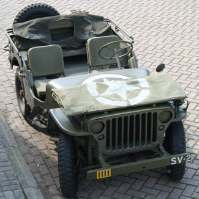
By Johan Willaert · Posted
From my shoebox From the days when we ordered and bought from paper catalogs... Tom & Sharon, great people, great stuff, great prices! -

By Argonaut146 · Posted
Thanks, that’s super helpful. I’ll probably leave the sliders as-is for now, but it’s good to know there’s a quick fix if I ever want to tighten them up. About the markings; I've seen a few photos from Vietnam where it looks like soldiers just redrew the US stamp by hand, probably with a Sharpie or something similar. I attached one here where it looks like the ammo pouch has a hand-done marking. Did you ever see that happen back in the day? Were soldiers told to do that, or was it just something they did on their own? Thanks, Dave! Yeah, I figured that might be the case with the markings. Its really a shame someone tried to scrub them off. As for getting another one, you're right they are a lot cheaper in the States, but the shipping costs to Slovenia are usually so high that it still ends up being much cheaper for me to pick one up locally when I can. -

By RWW · Posted
I have not had that problem. I just searched "surplus" in collectibles, then clicked "militaria". The links are in blue on my laptop and show from top down show the 3 categories in order of the most listings. In my case they are Current Militaria, WW II, and Vietnam. When I click "More +", I get 8 more categories, including WW I. eBay does some strange things sometimes, but your issue is not one I have had.
-
-

-

-
* While this forum is partially supported by our advertisers, we make no claim nor endorsement of authenticity of the products which these advertisers sell. If you have an issue with any advertiser, please take it up with them and not with the owner or staff of this forum.





